
Centre of Jaina Studies Newsletter: SOAS - University of London
An Encyclopaedic Dictionary of Sanskrit on Historic Principles has been in progress at the Deccan College, Pune, since 1948. Dr A. M. Ghatage, a retired professor of Ardhamāgadhī, worked on this Dictionary from 1972 to 1982 and published Vols. I & II, comprising 1,677 pages. Navalmal K. Firodia, a local industrialist, philanthropist and freedom fighter, envisaged the idea of a Prakrit-English Dictionary along the same lines. He apprised Prof. Ghatage and Prof. R. N. Dandekar, who was then the Secretary of the Bhandarkar Oriental Research Institute (BORI), Pune, of his proposal and requested that they lay the groundwork for this project. Prof. Dandekar not only agreed to provide office space and library facilities, but also offered to be a cosponsor. To inaugurate this project without any hitch, Shri Firodiaji set up an institution, Sanmati Teerth, and created an exclusive governing body for this purpose. Prof. Ghatage served as general editor on this project from 1987 to 2002. Then Prof. R. P. Poddar succeeded him as chair. The project became functional in 1991 and the first fascicule of A Comprehensive and Critical Dictionary of Prakrit Languages with Special Reference to Jain Literature was published in 1992. As of now we have published 5 volumes, comprising 2,024 pages.[1]So far the vowels have been completed and the work on the first consonant kā is in progress.
The necessity of explaining and providing equivalents of words has a long history and was felt already in the Āgamic period itself. Ṭhāṇa and Samavāyo are obvious attempts to meet this necessity. Because of elision of medial consonants, words were often confused. So there were attempts at resolving such confusions. For instance, to the question "kulatthā kati vihā paṇṇattā," "How many meanings of 'kulatthā' are known?," the reply is explained to be twofold: "itthi kulatthā" (S. kulasthā), "a nobleborn woman," and "dhānya kulatthā" (S. kulatthā), "the horse gram (Dolichos uniflorus)." Such confusions in the Prakrit languages had to be interpreted in the standard language of the time, i.e., Sanskrit. Thus the need arose for Sanskrit commentaries.
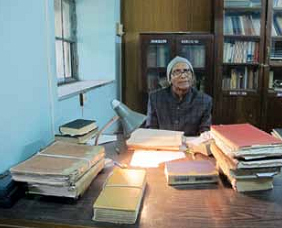
R. P. Poddar
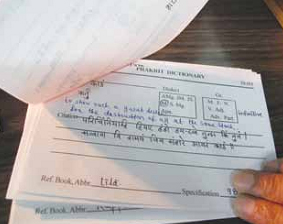
Word-slip for the infinitive kāuṃ (S. kartum), "to do," with citation from the Literary Mahārāṣṭrī text Līlāvaī.
The earliest attempt at Prakrit lexicography is attributed to Dhanapāla. He recorded 998 words with their synonyms in 279 gāthās in his 10th century anthology Pāiyalacchīnāmamālā. This treatise was followed by Ācārya Hemacandra's collection of words that did not derive from Sanskrit, originally titled Rayaṇāvalī, now published as Deśīnāmamālā by BORI. Next came the Abhidhāna Rājendra Koṣa of Vijaya Rājendra Suri. It is a collection of Prakrit words with definitions and citations. However, it is bulky and overloaded with citations. All the same, the dictionaries which are handy and of everyday use are: i) Ardhamāgadhī Koṣa of Ratnacandramuni and ii) Pāiya-Sadda-Mahaṇṇavo of Hargovind Das T. Sheth. The first is mainly confined to the Ardhamāgadhī literature. The second, too, by and large remains within the fold of Śvetāmbara Jain literature and occasionally includes Sanskrit (= Prakrit) dramas. Unlike earlier dictionaries, our dictionary is comprehensive. It includes both the Digambara and the Śvetāmbara canons. Besides, it covers secular literature as well, having no pronounced inclination towards any religious sect.
Our dictionary covers all seven Prakrit dialects: ArdhaMāgadhī, Jaina Mahārāṣṭrī, Jain Śaurasenī, Literary Mahārāṣṭrī, Śaurasenī (as spoken by women characters in Sanskrit plays), Māgadhī (of which two types are found, one spoken by lower characters and the other artificial one, as spoken by Śākāra in Mṛcchakaṭikam where in one verse [I.23] śā recurs eighteen times, obviously for satirical purpose), and Apabhraṃśas, or dialects.
The excavation of Kaṅkāḷī Ṭīlā, near Mathurā, the former capital of Śūrasena, has proved that there was a concentration of the Jaina population in this area. Their pontiffs believed that the original teachings of Mahāvīra were lost, and therefore retold them in the local dialect, Śaurasenī. Because it was the dominant language of the Śvetāmbara Jaina scriptures, it was further developed into Jaina Śaurasenī (JŚ). This is the language of the Digambara Ṣaḍkhaṇṭāgama and its Dhavalā commentary. Women in Sanskrit plays also speak Śaurasenī, but in their songs, instead of softening intervocalic hard consonants (ka>ga), they slide it all together (ka>a). In Prakrit kāvyas, such as Setubandha and Gauḍavaha, this elision has become a rule, ushering in a new dialect, Mahārāṣṭrī, so named on account of its connection with Mahārāṣṭra. But the use of this dialect remains limited to the kāvyas only. This shows that it was never a spoken dialect.
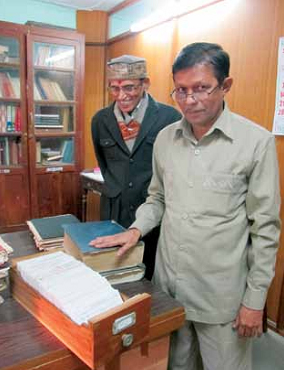
Meenakshi Kodnikar & Kamalkumar Jain with one of the index card files, Kā 1.
The word Apabhraṃśa means "what has fallen apart from the standard." All the standard languages, when used by common people and therefore not in keeping with standard phonetics and grammar, develop dialectic forms. The word go, "a cow," has several dialectic forms, such as goṇā, gopotalikā, gāya, gāi, etc. The Prakrits standardized in the Jaina scriptures, Sanskrit plays, and the Prakrit kāvyas, when used by the commoners gave rise to Apabhraṃśas, or dialects, which varied according to time and place. Three categories have been demarcated: Western-, Midland- and Eastern Apabhraṃśas. These in turn gave rise to modern dialects such as Gujarātī, Māravāṛī, Brajabhāṣā, Avadhī, Kāśikā, Vajjakā, Maithilī, Magahī, Aṅgika, etc. These too have their literature. Particularly Braj Bhāṣā, Avadhī and Maithilī are very rich in devotional literature. Since these languages have developed from Middle Indo-Aryan languages, readers and lexicographers of these may benefit from BORI's comparative and critical dictionary of Prakrit languages.
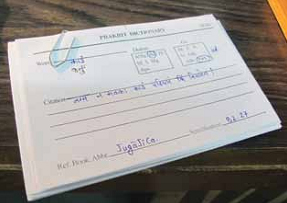
Word-slip for the infinitive kāuṃ (S. kartum), "to do," with citation from the Jaina Mahārāṣṭrī text JugāiJiṇiṇdaCariya v. 82.27.
The methodology for creating A Comprehensive & Critical Dictionary of the Prakrit Languages with Special Reference to Jain Literature was agreed after extensive consultation.[2] To begin with, word-slips were prepared and arranged alphabetically. The sources are earlier dictionaries, such as Ardhamāgadhī Koṣa, PāiyaSadda-Mahaṇṇavo and indices of individual texts and grammars, wherever available. In earlier publications of Prakrit works, such as those of the Āgamodaya Samiti, there being no indexes, words are to be called from the text itself. A Comprehensive & Critical Dictionary of the Prakrit Languages with Special Reference to Jain Literature is the first to give easily traceable references to passages in published editions together with citations.
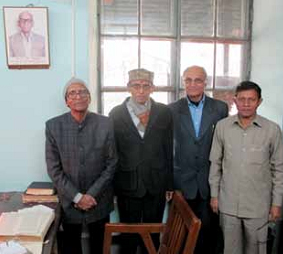
The editorial team (left to right): R. Poddar, Meenakshi Kodnikar, Lalita Marathe & Kamalkumar Jain below the photo of M.A. Ghatage.
A Comprehensive & Critical Dictionary of the Prakrit Languages with Special Reference to Jain Literature. Volume Five, Fascicule I & II. [Founding General Editor: A.M. Ghatage.] General Editor: R.P. Poddar. Copy Editor: Kamalkumar Jain. Assistant Editors: Meenakshi Kodnikar, Lalita Marathe. Pune: Bhandakar Oriental Research Institute, 2014.
A.M. Ghatage, "Preface" & "Introduction," A Comprehensive & Critical Dictionary of the Prakrit Languages with Special Reference to Jain Literature. Vol. I. General Editor: A. M. Ghatage. Editorial Assistants: G.B. Palsule, Nalini Joshi, Meenakshi Kodnikar, Kamalkumar Jain: i-iv, v-xxxvi. Pune: Bhandakar Oriental Research Institute, 1996.
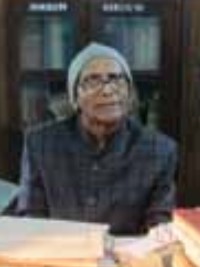 Prof. Dr. Ramprakash Poddar
Prof. Dr. Ramprakash Poddar